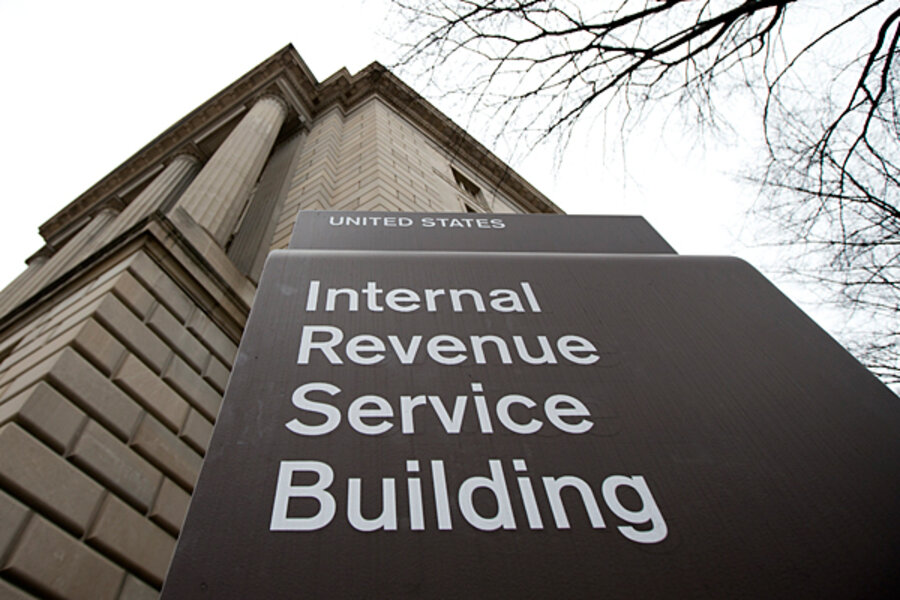Tax revenue to hit record this year. So is spending 'the problem'?
Loading...
An impasse over the shape of the federal budget keeps boiling down to this basic plotline: Democrats say the solution to high deficits must include more tax revenue, while Republicans say the fundamental problem is spending.
Failure to reach a middle ground has prompted automatic spending cuts known as the “sequester” to go into effect. This wasn’t Plan A, or even Plan B, for either side.
As the politicians look for a way forward, conservative lawmakers say that new budget projections make their case for them. Federal tax revenue is forecast to hit a record $2.7 trillion this year, according to the Congressional Budget Office (CBO).
“Spending is the problem, which means cutting spending is the solution. It’s that simple,” said Rep. Cathy McMorris Rodgers of Washington State on Saturday, as she gave congressional Republicans’ weekly address to the nation. She cited the CBO forecast of record revenues.
Case closed?
Not so fast. The budget numbers tell a more complicated story – one that makes fiscal politics difficult for both parties.
Yes, if $2.7 trillion in revenue materializes this year, that would set a record. It would surpass the prior peak of $2.6 trillion, set back in fiscal year 2007 before the recession began.
But that doesn’t mean federal tax receipts are fully back to normal.
Economists generally compare taxes and spending to the size of overall economy. That’s because demands on government often increase as the economy grows and population rises. And the value of tax receipts needs to be adjusted for inflation, to give a real sense of purchasing power.
Tax revenue will total 16.9 percent of gross domestic product this year, the CBO predicts, compared with 18.5 percent of GDP in 2007. It looks as if it will take another year, until 2014, for tax revenue to get back to 18 percent of GDP, which has been the average level since 1973.
But here’s the big issue: There’s no level of tax revenue or federal spending that’s automatically the “right” level. Yesterday’s averages don’t tell us what tomorrow’s should be.
And most signs point toward difficult choices ahead. Entitlement programs including Medicare, Medicaid, and Social Security are taking up an ever larger share of federal spending.
Is spending “the problem”? Yes, in one sense. If federal outlays could be steered permanently back to their 35-year average of 21 percent of GDP, much of the national-debt problem would be solved.
But the answer is no in another sense. In polls, Americans are generally reluctant to see cuts in those major entitlement programs. They don’t call Social Security or Medicare “the problem.”
Douglas Elmendorf, the CBO director, pinpointed the tough choices ahead in a presentation to private-sector economists Monday.
“Putting the debt on a sustainable path will ultimately require increases in taxes or cuts in government benefits or services for people who consider themselves to be in the middle class,” he said.
A third way, Mr. Elmendorf notes, is to do a bit of both those unpopular things. (And a fourth way is to delay, until America’s fiscal condition turns into a financial crisis.)
Against this backdrop, both major political parties have to navigate tricky paths forward. Both have attuned voters to expect low taxes, with Republicans being more adamant on that point. And both have been wary of the political risks of cutting entitlements. Democrats, in particular, have been eager to cast themselves as defenders of the status quo for those programs.
The spending that’s being cut by the sequester is mostly on the discretionary side of the budget – everything from national defense to scientific research.
It's a segment of federal spending that’s smaller now (relative to GDP) than it has been in the past four decades. That doesn’t mean policymakers should avoid any spending cuts there. But budget experts say that, at best, the skirmish over discretionary spending cuts merely sets the stage for a bigger debate about the size of both entitlements and taxes.








